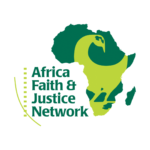On April 19, Voice of America reported that in “BENI – An Ebola flare-up in eastern Congo may spread again after a patient escaped from a clinic, complicating efforts to contain the disease that has infected six people since last week, the World Health Organization said on Sunday.”
Mar 29, 2020, Andrew Pekosz, Professor of Molecular Microbiology and Immunology, Johns Hopkins University Bloomberg School of Public Health said in a tweet: “I know #COVID19 is the primary concern of everyone but it’s good to acknowledge the efforts in #DRC at controlling their #Ebola outbreak.” On the same day, Dr. Tedros Adhanom Ghebreyesus, Director-General of the World Health Organization reminded the world in a tweet saying that “It’s been 40 days since the last #Ebola case was confirmed in #DRC and 25 days since the last person in treatment recovered and went home. If there are no new cases, the outbreak could be declared over by mid-April. We remain in active response mode in case of flare-ups.” Several years ago any Ebola patient were hopeless, but starting in 2019 this is not the case. This will be the case with Coronavirus.
The United States’ National Institute of Allergies and Infectious Diseases (NIAID) reported in August 2019 that there is hope for Ebola patients. The clinical trial in the Democratic Republic of the Congo (DRC) of the following drugs REGN-EB3 and mAb114 have been positive. “The results prompted an independent data and safety monitoring board to recommend the study be stopped and that all future patients be randomized to receive REGN-EB3 or mAb114 in an extension phase of the study.” (National Institute of Health) Also, in DRC people at risk of contracting Ebola were administered rVSV-ZEBOV, a vaccine developed by Merck and supported by NIAID. It was previously tested in clinical trials in West Africa.
The current Ebola outbreak in eastern Democratic Republic of the Congo (DRC) was officially confirmed first on August 1, 2018 in Mangina, in North Kivu Province. Healthcare professionals have determined that the current strain is the Zaire Ebola virus, the deadliest and it is similar to the strain of the 2014-2016 West Africa outbreak. On July 17, 2019, two days after a case was confirmed in the City of Goma near the City of Gisenyi in Rwanda, the World Health Organization (WHO) declared that the ongoing Ebola outbreak in the Democratic Republic of the Congo (DRC) represents a Public Health Emergency of International Concern (PHEIC). This was after three cases were confirmed in Uganda respectively on June 11, 2019 and one on August 29, 2019. All of them died.
From Mangina where it was first declared, it moved towards the city of Beni, continued to Butembo, Katwa and went as far as Kanya area in North Kivu province. Sporadic cases also appeared in neighbouring Ituri province to the north. However the spread continues to be unpredictable because it was confirmed in Mwenga, in South Kivu province, far away from the hotspot.
This is the second deadliest Ebola outbreak behind the 2014 West Africa epidemic, which killed more than 11,000 people. The November 5 updates by Doctors Without Borders reported that as of 3 November 2019 there have been 2,185 deaths. Furthermore, “people continue to die in their communities, undiagnosed, untreated.” (Doctors Without Borders). With its international partners, the DRC has fought and stopped the spread of nine other outbreaks in the past, why hasn’t it done so this time? Reasons include but are not limited to armed-conflict in the affected area, deep-seated mistrust of international organizations and expatriate workers. Consequently, it is hard to identify and monitor people who have been in contact with Ebola patients.
Seven days after WHO declared the Ebola outbreak in DRC a Public Health Emergency of International Concern, the United States announced an assistance package of $38 million. This is in addition to $98 million that was announced on July 2, 2019, bringing U.S. total contribution to date to $136 million.
The social and economic impacts of the outbreak are devastating. The restrictions not to be in close contact with an Ebola patient has led to social isolation of the survivors and sometimes their family members. This is making former Ebola patients’ recovery and social reintegration difficult. These former Ebola patients are excluded from commercial activities because people fear to purchase merchandise or produce from them thinking they would be contaminated. Because of this and other factors, they depend on aid organization for food and other necessities. Also, people have fled their localities fearing contracting the disease, thus becoming internally displaced and unable to go about their regular business which sustains their livelihoods.
